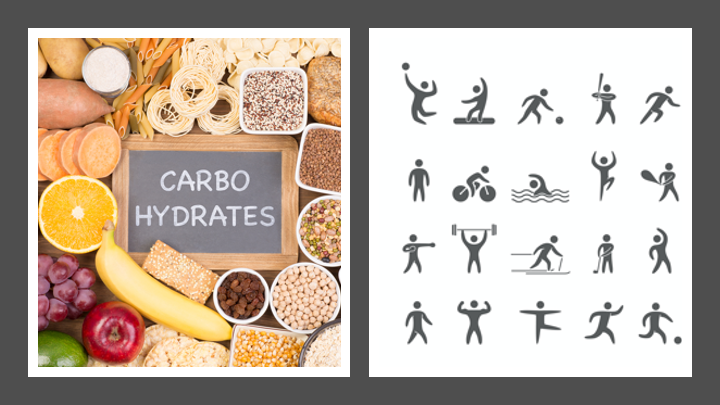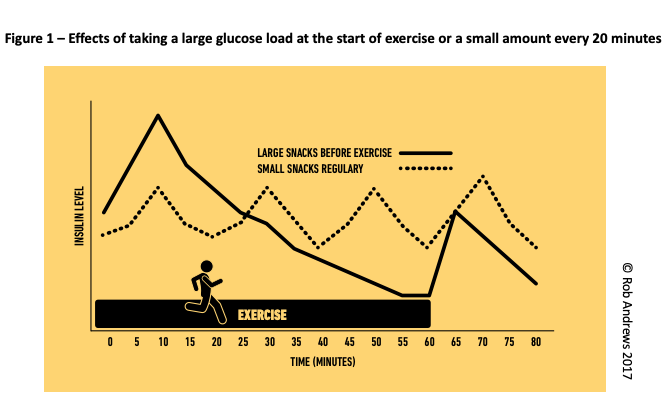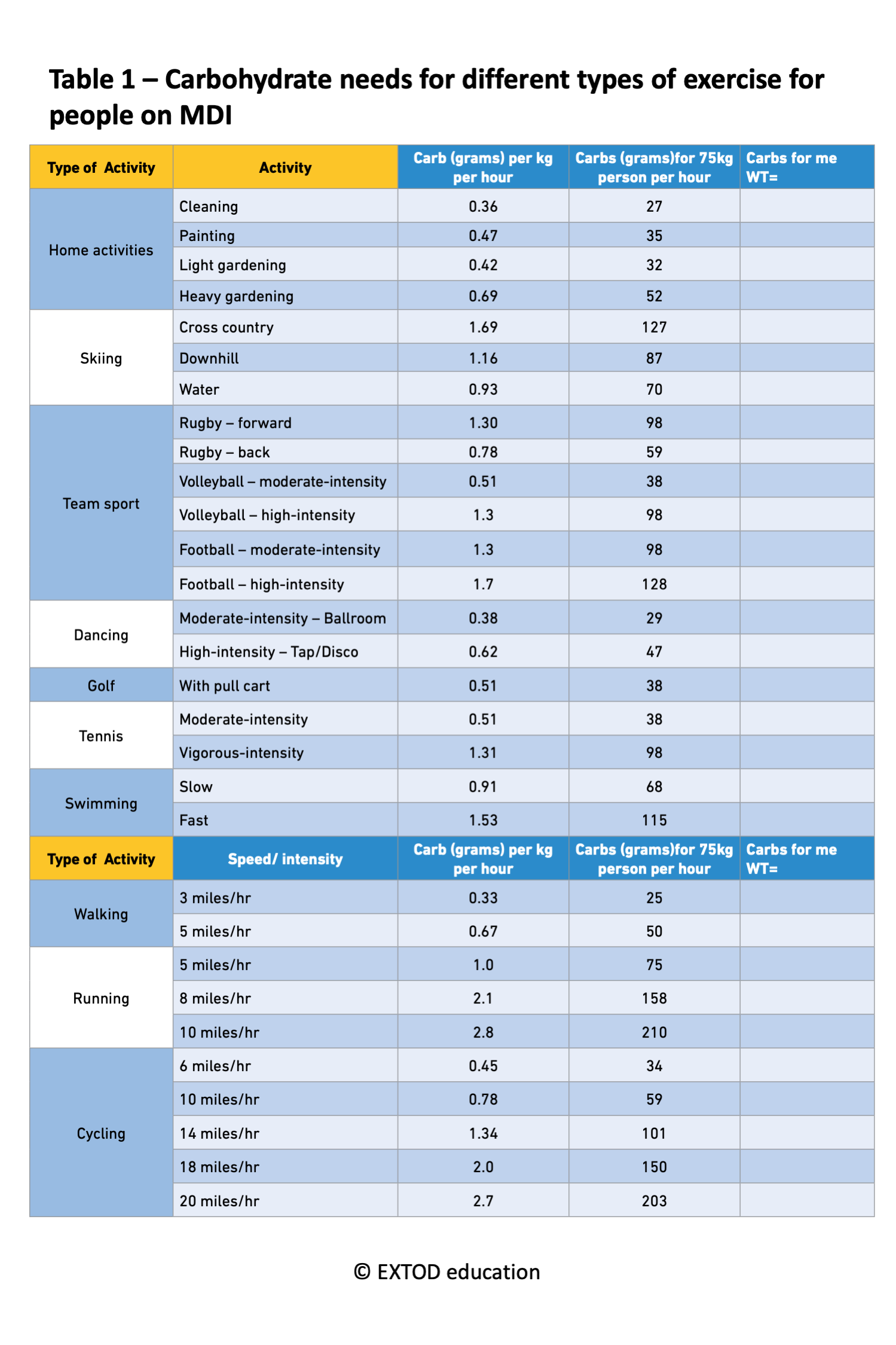 Advice for Professionals
Advice for Professionals

Carbohydrates for exercise for people on multiple daily injections
The two main fuels used during exercise are fats and carbohydrates (in the form of glucose). People with Type 1 Diabetes burn fat normally during exercise; it is only the production of carbohydrate that they have problems with.
When using Carbs for exercising the aim is to take all the carbohydrate needed to perform the particular exercise so that the glucose remains stable across the exercise. The amount of carbohydrate needed for an exercise will depend on the type, intensity and length of the exercise and the weight, sex, age and fitness of the person preforming the exercise (see strategies for managing glucose during exercise).
Carbohydrates taken for exercise is sometimes called ‘Ex-Carbs’. There are four methods that can be used to calculate the Ex-Carbs. Each of these are estimates and need to be individually adapted based on how the blood glucose changes across the exercise. With time the amount taken may need to change as the person gets fitter.
For all methods the Ex Carb should be spread across the exercise rather than at the start of exercise. This prevent a large glucose rise at the start and then a fall across the duration of the exercise. Ideally the carbohydrate should be taken every 20 minutes (see figure 1 below). This should be quick-acting carbohydrate. If it is difficult to take carbohydrate every 20 minutes then the amount of carbohydrate needed for the exercise can be taken as slow-acting carbohydrate at the start of the exercise. More information on this can be found in fuel for exercise section of this website.

Basic strategy
The general recommendation for carbohydrate consumption is 30g of carbohydrate every 60 min of exercise. Although activities vary widely in terms of fuel requirements, this range represents a safe starting point for most people with Type 1 Diabetes who wish to begin moderate intensity exercise regimens (to learn how to define intensity of exercise go to defining intensity of exercise section of this website). If using this strategy, it is important to monitor blood glucose levels at least every 30 minutes during exercise and review blood glucose measurements. In this way, carbohydrate intake can be adjusted for future planned exercise.
Glucose may not need to be taken for low intensity exercise that lasts less than 30 minutes. However, if this form of exercise lasts longer than 30 minutes then the recommendation is to take 30g of carbohydrate per hour and adjusting intake for future exercise, based on what happened to the blood glucose.
For example: Rob wishes to exercise for 60 minutes. He will take 10g of carbohydrate at the start, 10g at 20 minutes and 10g at 40 minutes. Patients can be given the flow sheet below (figure 2) to take them through how to use this method. Examples of food or drinks that you can take to supply this carbohydrate see the fuel for exercise section of this website.

Semi-quantitative method
The semi-quantitative method uses an estimate of carbohydrate requirements based on body weight. For patients on multiple daily insulin injections, 0.5g/kg/hr is used for moderate intensity activity, and 1g/kg/hr is used for high intensity activity.
For example: Rob wishes to exercise at high intensity for 60 minutes. He weighs 90 kg, so will need to take 90 grams (90 X 1.0 x 1). To do this he will take 30 grams at the start, 30 grams at 20 minutes and 30 grams at 40 minutes.
Quantitative method
To account for the variable fuel requirements of different types of exercise, standardised tables have been devised to help athletes estimate ‘ExCarbs’. This can be used for many different activities with varying intensities and according to body weight (see Table 1 below). This activity-specific approach to estimating ‘ExCarbs’, although not tested in a clinical trial setting, is a popular resource among active patients with type 1 diabetes. To calculate Ex carb for a patient, go to the calculating Ex carb section of this website. To download this table, go to the download section.
For example: Ben wishes to run for 60 minutes at 5 miles per hour. He weighs 75kg. Using Table 1, this requires 59 g of carbs, so he will take 20g at the start, 20g at 20 minutes and 19g at 40 minutes.

Using the Borg Scale to calculate glucose requirements
The Borg Scale can be used to calculate how much glucose is required for an exercise by using the exercise’s intensity. See figure 3 below. To download this figure, go to the download section.
For example: Rob wishes to exercise at Borg Scale 13 activity for 60 minutes. He weighs 90 kg, so will need to take 90 grams (90 X 1.0 x 1). To do this he will take 30 grams at the start, 30 grams at 20 minutes and 30 grams at 40 minutes.

